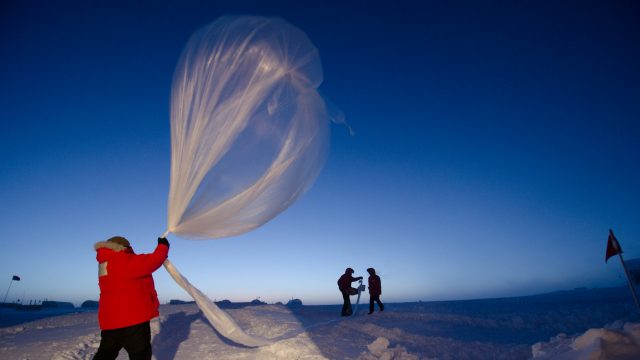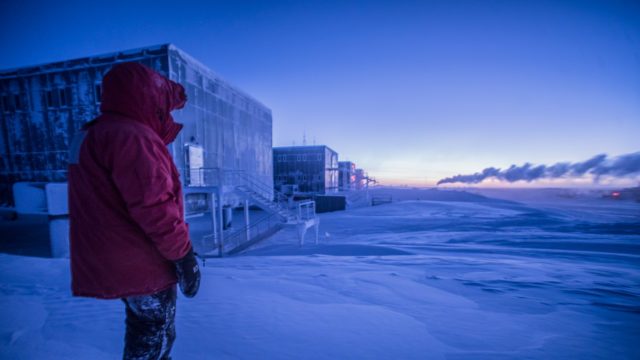The 2016 formation of the Antarctic Ozone Hole turned out to be fairly “average.” After 2015, where an incredibly stable polar vortex held the depletion region together well in to December, NOAA scientist were curious how 2016 would progress. Although the vortex remained fairly stable and circular, the depletion region never quite reached the size seen last… Read More
By Refael Klein, NOAA Corps officer, from South Pole, October 3 The sun sits two fingers above the horizon. It is obscured by fine, white, icy clouds, but nonetheless you can make out its circular shape—dimming and brightening with each gust wind and slight fluctuation in temperature. Pulsing, blinking, fluttering, stuttering, in a dead language,… Read More
With sunrise finally arriving and the South Pole beginning six straight months of daytime, destruction of protective ozone continues high above in the stratosphere. As can be seen in the plot above, 2016 continues marching toward a minimum measurement of total column ozone during the annual formation of the Antarctic Ozone Hole. Scientists at Boulder’s… Read More
By Irina Petropavovskikh, CIRES and NOAA scientist, from Boulder, September 23 This morning’s e-mail arrived with the first of the World Meteorological Organization’s (WMO) 2016 Antarctic Ozone Bulletins. These bulletins discuss the processes that affect formation of the ozone hole and the status of the ozone layer over the entire Antarctic continent Here’s a short excerpt from the Antarctic Ozone Bulletin no. 1,… Read More
With sunrise now only a few days away, NOAA scientists at the South Pole continue to launch balloons high in to the stratosphere to measure the quickly depleting ozone layer overhead. Free chlorine activated by the long-absent sunlight high in the stratosphere is currently destroying large swaths of protective ozone. The instrument on this balloon… Read More
Check out this link to our South Pole camera! It shows a picture of the Amundsen-Scott South Pole Station taken every 15 minutes (if a relay satellite is available for transmission) from the roof of the National Science Foundation’s Atmospheric Research Observatory (ARO), which houses NOAA/ESRL’s Clean Air Facility. http://www.esrl.noaa.gov/gmd/obop/spo/livecamera.html .… Read More
By Irina Petropavlovskikh, CIRES and NOAA scientist, from Boulder, September 16 Our NOAA colleague Rafael Klein has a separate blog published through the VOA. Klein is a Lieutenant Junior Grade in the National Oceanic and Atmospheric Administration Commissioned Officer Corps (NOAA Corps). He is working and living at South Pole to help NOAA to pursue its mission of… Read More
By Patrick Culls, CIRES and NOAA scientist, from Boulder, September 15 From 2008-2009, I spent a year living at the bottom of the world. I worked for the National Oceanic and Atmospheric Administration (NOAA) at the Amundsen-Scott South Pole Station, which sits only a hundred yards from the geographic pole marker. The short summer season was… Read More
By Irina Petropavlovskikh, CIRES and NOAA scientist, from Boulder, September 13 This is the hot time for the NOAA/CIRES ozone team in Boulder and at the South Pole. In Boulder, every day starts with the question, “Any news from South Pole?” We’re all eager to know if the latest sonde launch went well, and if we’re starting to… Read More
By Irina Petropavlovskikh, CIRES and NOAA scientist, from Edinburgh, September 1 Here in Edinburgh, Scotland, there are about 300 scientists who came together to discuss ozone in stratosphere, troposphere and near the surface. We have heard talks about recent ozone changes and prediction for the future expectations for ozone recovery, super-recovery or just a new level of… Read More










